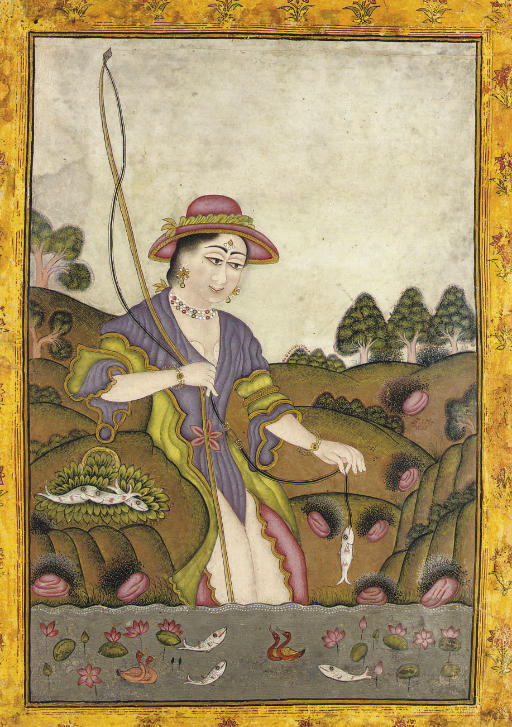

"A European Lady Fishing," a painting in Rajasthani style, c.1760
Source:
http://www.christies.com/LotFinder/lfsearch_coa/LotDescription.aspx?intObjectId=5057629
(downloaded Mar. 2008)
"A EUROPEAN LADY FISHING. UNIARA, CIRCA 1760. Gouache heightened
with
gold on paper, a lady sits on a hilly bank wearing blue costume, green
shawl and pink hat, holding in one hand a fishing rod and in the other
the line, with a fish attached, duck and fish swim amongst waterlilies
in the water in front of her and to her right lie the fish she has
caught,
between black, red and gold rules, the margins yellow with repeated
floral
motif, mounted, glazed and framed
12½ x 8 3/8in. (31.7 x 21.3cm.)."
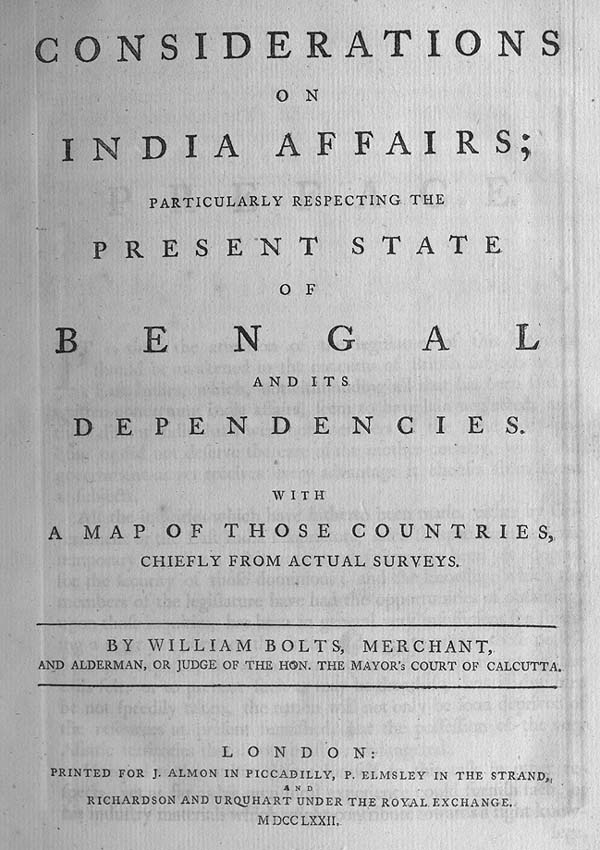
William Bolts of Calcutta-- merchant, judge, and serious-minded author-- published this work in London in 1772 (here's a look at *the map* that it contained)
Source: ebay, Aug. 2001
"This book contains a very attractive 8-segment fold-out map of Bengal and its Dependencies...The text itself begins with 31 pages of Preface, Advertisement, Glossary of Hindostan Words as used in Bengal, and Table of Contents. This is followed by 228 pages of the actual report (as described on the title-page). Next is a 165-page Appendix, and this is followed by 100 pages of 'Letters to and from the East-India Company's Servants at Bengal, Fort St. George, and Bombay'."
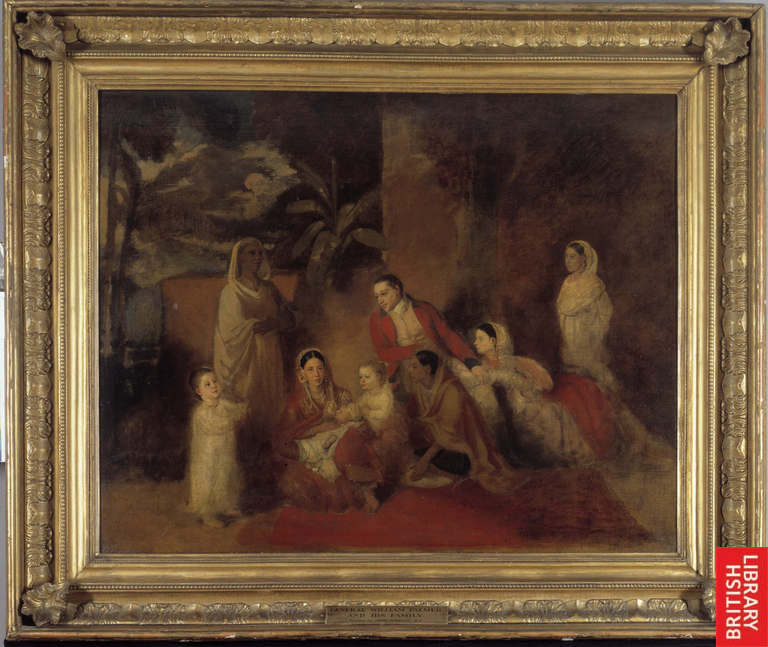
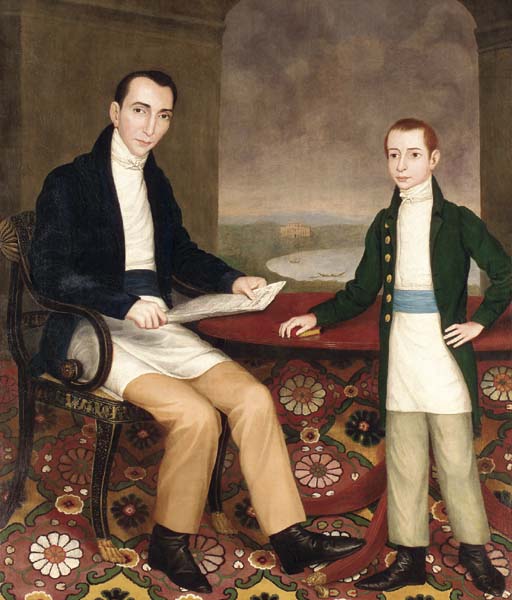
A merchant and his son, c.1800
Source:
http://www.christies.com/LotFinder/search/LotDetail.asp?sid=&intObjectID=4548337&SE=CMWCAT04+115774+1392870876+&QR=M+1+112+Aqc0000900+98223++Aqc0000900+&entry=india&SU=1&RQ=True&AN=113
(downloaded July 2005)
"English School, c.1800. A Merchant, seated full length, holding a copy of a broadsheet, at a table, his son standing at his side, a view of a residence on coastline (probably Indian) beyond. oil on canvas. 67 x 56½in. (170.2 x 143.5cm.)"
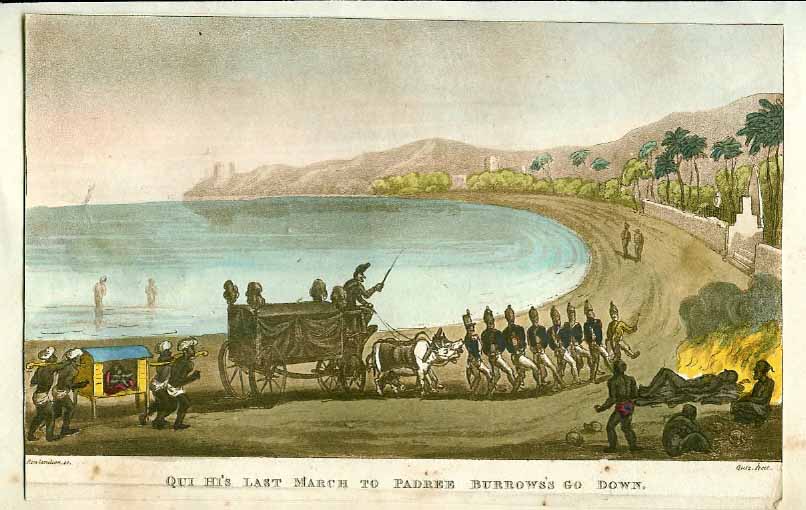
"Qui Hi's last march to Padre Burrows's Godown [warehouse]," caricature, 1816
The English in India were often sarcastically called "qui hi-s" from "ko'i hai?" ("Is anyone there?" in Hindi/Urdu), the proverbial all-purpose call for a servant
Source: ebay, Aug. 2005
"A hand-coloured aquatint drawn and engraved by the great Regency caricaturist, Thomas Rowlandson, from a 1st edition of a work called ' The Grand Master or Adventures of Qui Hi in Hindostan. A Hudibrastic Poem in Eight Cantos by Quiz', published by Thomas Tegg in 1816. This work was supposed to have been written by the author of the 'Dr. Syntax' poems, William Combe, although this is a much rarer work. At the time it was considered to be a savage satire aimed at Lord Moira, First Marquis of Hastings, governor-general of Bengal from 1813-1822 and commander-in-chief of the British forces in India. The work criticises the often pompous attitude of the British to the Indian population and the inefficiency and corruption of the East India Company."
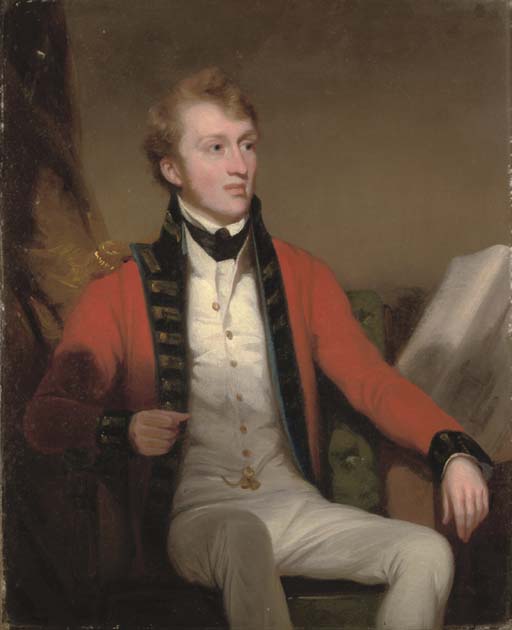
"Portrait of a Company officer," by George Chinnery, early 1800's
Source:
http://www.christies.com/LotFinder/search/LotDetail.asp?sid=&highlights=%3Cspan+class%3D%27esn%5Fsegment%27+title%3D%27%2FLotCommon%2FLotNotes%27%3Efamily%2E++Deserting+them+in+1802%2C+he+sailed+to+%3Cb%3E%3Cspan+class%3D%27esn%5Fhighlight%27%3EIndia%3C%2Fspan%3E%3C%2Fb%3E%2C+and+for+twenty+years+painted+scenes+of+Indian%3C%2Fspan%3E+%2E%2E%2E&intObjectID=4825623&AllObjectIDs=4812625,4812668,4812734,4812694,4812674,4812759,4812733,4825623,4803289,4825631,4826938,4826950,4824199,4806287,4806283,4823468,4815061,4815058,4806396,4802706&RefineQueryURL=AdvancedSearch%2Easp%3Fsid%3D%26entry%3Dindia%26T%3DLot%26P%3D%26CF%3D%26SU%3D1%26RQ%3DTrue%26AN%3D121
(downloaded Nov. 2006)
"George Chinnery, R.H.A. (1774-1852). Portrait of a company officer, small three-quarter-length, in uniform, seated; oil on canvas; 15¾ x 12¾ in. (40 x 32.5 cm.).
Lot Notes George Chinnery met success early as a portraitist, exhibiting his first work in 1791, and winning acclaim in both London and then Dublin, where he moved in 1795. During his time in Dublin, he became R.H.A. The rest of his intriguing life seems to have been motivated partly by a desire to avoid his wife, whom he had married in Ireland, and with whom he had a young family. Deserting them in 1802, he sailed to India, and for twenty years painted scenes of Indian life, and portraits of the British expatriate community. In 1825, he discovered that his family had tracked him down, and fled ahead of them to Macao. He continued on to Canton, but heard in 1830 that his wife had died; he then returned to Macao and continued his career as a painter there, showing his all-embracing fascination with Oriental life. He died a prosperous man, in 1852."

*A watercolor portrait of an English doctor, Company school, c. 1830 (with ZOOM)* (FAMSF)
"Death of *Bishop
Heber*" (1826), a steel engraving, 1844-50, by H. Melville and J.
Sands; click on the image for a very large scan
Source: ebay, June 2007
== Indian Routes index == Indian Routes sitemap == Glossary == FWP's main page ==